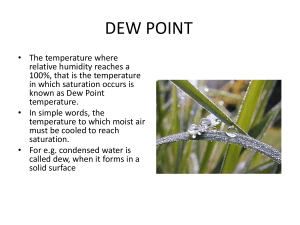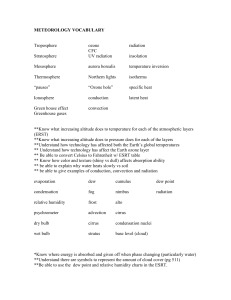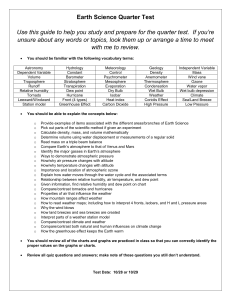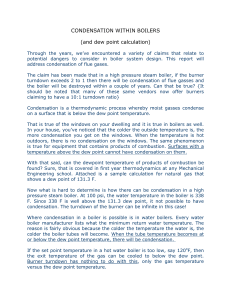Dew Point Explained: Definition, Formation, and Experiment
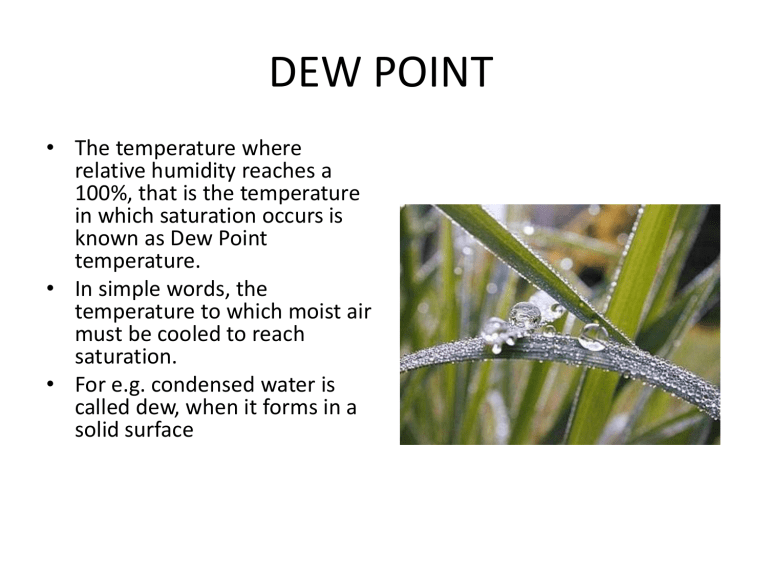
DEW POINT
• The temperature where relative humidity reaches a
100%, that is the temperature in which saturation occurs is known as Dew Point temperature.
• In simple words, the temperature to which moist air must be cooled to reach saturation.
• For e.g. condensed water is called dew, when it forms in a solid surface
15C
• Shown here is the parcel of air, which is at 15C and has certain amount of water vapor inside.
13C
11C
• Look at the image and notice that now when parcel of air is cooled , its capacity to hold water vapor reduces and relative amount moisture of air increases.
• In other words, its relative humidity is increasing.
10C
• When 10C is reached, parcel of air is holding as much water vapor as it can and is therefore saturated.
• The relative humidity is 100%.
• This temperature is the dew point temperature.
• If parcel of air were to cool further, condensation would occur, because the air can hold no more water vapor at this temperature.
• This condensation is visible to us because clouds and fog will form as visible water droplets condense out of the saturated air.
An Example
• If the air temperature cools to the dew point, or if the dew point rises to equal the air temperature, then dew, fog or clouds b egin to form. At this point where the dew point temperature equals the air temperature, the relative humidity is
100%.
4 Steps To Create Dew Point
• You will need an aluminum beverage can, cutter or blade, water and a lot of ice cubes.
• Cut a shiny aluminum beverage can in half and preserve the bottom portion for use as a receptacle.
• Fill the can with tap water.
• Add ice cubes to the water to effectively lower the can’s surface temperature. Stir the mixture gently and keep adding ice until condensation forms on the can’s exterior surface.
